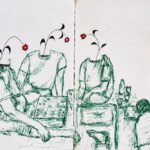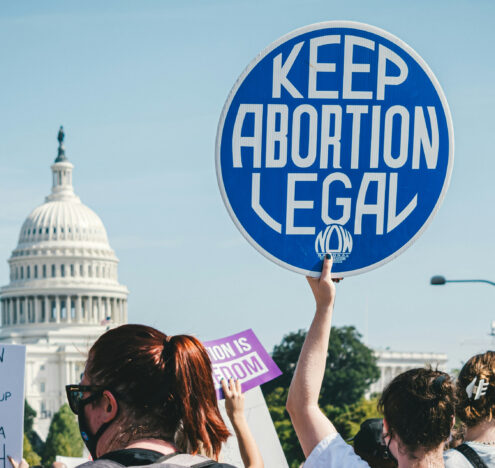At some point in my conversation with Whit Montgomery, a Montreal-based artist, it seemed clear what the recurring theme of our discussions would be: connections. He spoke of numerous parallels across diverse media from a wide variety of origins and time periods while I nodded vigorously in agreement with his analysis. With shared fascinations for propaganda, the potency of a well-told story, and an unexpected overlap in the culturally appropriate way to ask for favors in Canada and the Midwest US, Whit and I most passionately agreed on one thing in particular: We love lore. And in this interview, Whit has only just begun to give me a glimpse into the lore of his artwork and the fictional town of Alpine Meadows, a parallel reality where weaponization is both embraced and celebrated.
Professionally, Whit entered the Creative Capsule Residency in an almost opposite direction from our previous profile on Dr. Chantell Murphy. Whit received his BFA from Concordia University but has always felt curious about the ability of art to sway opinions. Now, after eight months of collaborations and research with nuclear historians, Whit has generated a series of paintings that aim to exaggerate and amplify the absurd, provoke, and encourage understanding of the consequences of glorifying tools of violence. Given my own pop culture x national security focused column, The Mixed-Up Files of Inkstick Media, Whit’s practice of melding fiction and non-fiction to challenge our perceptions of the world was right up my alley.
Molly: We’ll jump right into the questions and start with the most basic, the thing that every interview starts with, which is: tell me a little bit about yourself!
Whit: One thing interesting about me is that my mom was an artist, so art has kind of come naturally to me. And although our art is different, having that space as a kid to work creatively, to be encouraged to do so, and to have the tools to experiment so readily was a formative experience in the earliest parts of my career. Though I didn’t take artmaking very seriously until later on in high school, I have now been showing work for I guess around 10 years or so.
Molly: What was it like going from a formal art background with your BFA to this highly intersectional environment in the residency?
Whit: One thing I really appreciated was the ability to collaborate with the folks. For example, I’ve been able to meet Alex Wellerstein [a historian of science and nuclear technology, and Whit’s mentor in the Creative Capsule Residency] a few times, and that was an incredible opportunity just being able to pick his brain. Critiquing in general is so important in artmaking. And getting feedback through this residency from a whole range of different backgrounds rather than a purely artistic one felt like a big broadening of that iterative process. And it was reassuring to see people on the other end be excited to collaborate. I’m just… I never want to bother anyone. That’s just ingrained in me. Canadian culture, I guess.
Molly: Haha, Midwest US culture isn’t too different in that respect. It’s always, “Oh, if you don’t mind, but only if it’s not too much trouble, I’d really appreciate it if you could consider maybe doing this one little thing for me!?”
Whit: Always! Honestly, it’s exactly that.























